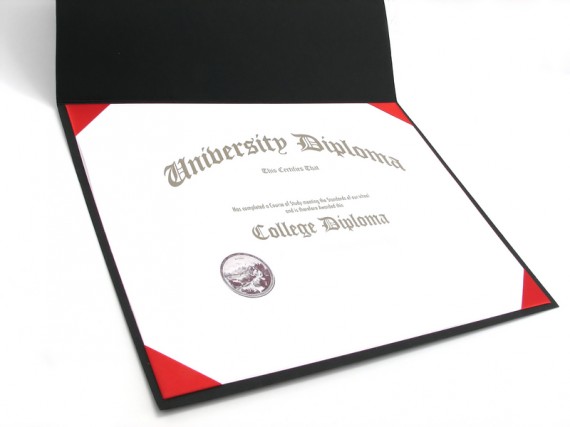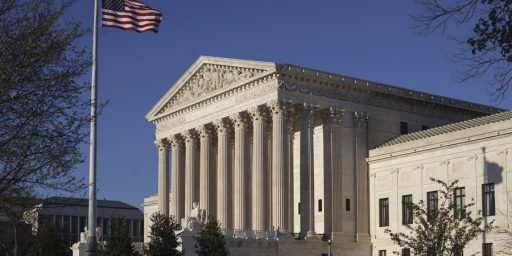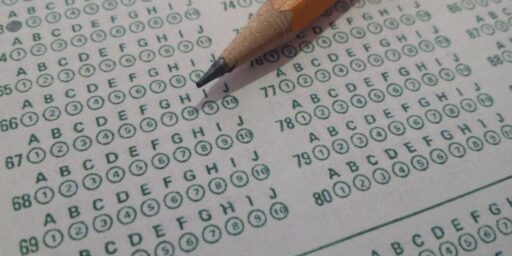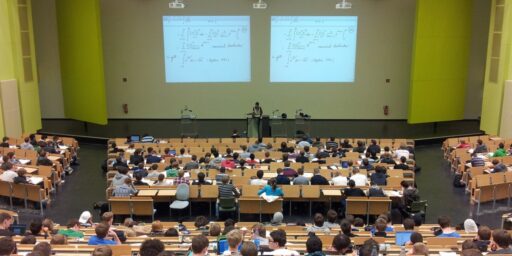America’s Top Colleges Turn Away 95% Of Applicants
It’s becoming harder than ever to gain admission to America’s elite universities:
Enrollment at American colleges is sliding, but competition for spots at top universities is more cutthroat and anxiety-inducing than ever. In the just-completed admissions season, Stanford University accepted only 5 percent of applicants, a new low among the most prestigious schools, with the odds nearly as bad at its elite rivals.
Deluged by more applications than ever, the most selective colleges are, inevitably, rejecting a vast majority, including legions of students they once would have accepted. Admissions directors at these institutions say that most of the students they turn down are such strong candidates that many are indistinguishable from those who get in.
Bruce Poch, a former admissions dean at Pomona College in Claremont, Calif., said he saw “the opposite of a virtuous cycle at work” in admissions. “Kids see that the admit rates are brutal and dropping, and it looks more like a crapshoot,” he said. “So they send more apps, which forces the colleges to lower their admit rates, which spurs the kids next year to send even more apps.”
For most of the past six decades, overall enrollment boomed, while the number of seats at elite colleges and universities grew much more slowly, making them steadily more selective. Enrollment peaked in 2011, and it has dropped a bit each year since then, prompting speculation that entry to competitive colleges would become marginally easier. Instead, counselors and admissions officers say, the pool of high-achieving applicants continues to grow, fed partly by a rising number from overseas.
At the same time, students send more applications than they once did, abetted by the electronic forms that have become nearly universal and uniform applications that can make adding one more college to the list just a matter of a click. Seven years ago, 315 colleges and universities accepted the most widely used form, the Common Application; this year, 517 did.
Students applying to seven or more colleges made up just 9 percent of the applicant pool in 1990, but accounted for 29 percent in 2011, according to surveys by the National Association for College Admission Counseling, and counselors and admissions officers say they think the figure has gone higher still. While people have lavished attention on a Long Island teenager who was accepted by all eight Ivy League colleges, admissions professionals say it is remarkable that anyone would apply to all eight.
To some degree then, the high rejection rates end up becoming a self-fulfilling prophecy by both creating an air of exclusivity that causes more people to see applying to these schools as desirable and by creating the incentive for High School students to apply to more and more colleges, a process that is now much easier in an electronic era. Add in the fact that graduating from one of these schools, for better or worse, essentially means that one can write their own ticket for a well paying future and it seems likely that the rejection rates at these schools will continue to inch closer to 99.99999%.







I’ve seen the same thing–worse, really–with employment applications, including for unpaid internships. Because most firms now take electronic submissions, people are just shotgunning their applications everywhere, regardless of suitability. So, we’d get 300 applicants for an unpaid internship, of which maybe 30 are remotely qualified.
@James Joyner:
At least for colleges, one way to stem the tide would be to increase application fees.
I was somewhat surprised to find out recently that application fees for college aren’t really much higher than they were when I applied to colleges nearly 30 years ago.
@Doug Mataconis:
The universities want more people to apply so that they can reject them. It makes the university’s US News standing higher. One of the good things about the ratings is universities have had to get serious about graduation rates. 30 years ago the state flagship university did not mind flunking people out. Now those schools need to be serious about limiting drop outs. That is one of the reason that some universities may admit a student to the university but not to certain colleges or programs.
Let’s not overstate this. An undergraduate degree from an elite school certainly looks awfully good on a resumé, but it’s no kind of free pass to wealth and glory.
@superdestroyer: Bingo! I don’t have the reference anymore but a few years back, one of the California schools attempted to take the US News #1 spot in the standings by setting a goal of over 22000 applications for about 1000 entry slots.
Application costs are not insubstantial. As a parent of a high school senior, we experienced this first hand this year. Each college application costs about $100. Applying to 8 or 9 schools put us out almost $1k. While it’s not a huge drain for me, it may be for families of lesser means.
Looking back, there are a lot of us who think we probably wouldn’t have gotten in to our alma mater if we were to apply under present-day circumstances…..
I do wonder how much of it is simply applicants applying to more colleges. I applied to one early admissions and got in, so that was that.
I also wonder how many parents are pushing their children to apply for certain colleges simply for the prestige factor. I used to do interviews for MIT–it was quite surprising the number of applicants who didn’t have anything science/tech-related in their backgrounds, no interest in science or engineering, and who had absolutely no idea what they would do if they were admitted to MIT.
DC Loser most colleges allow for few waivers for low income students although the number the guidance office can give out is limited (think you can get up to 5). Also some local charities like the Rotary Club will help with fees.
Grumpy Realist-MIT has some very good non technical/Engineering programs, although without good math and science scores you aren’t getting in even if you want to major in political science or American Lit.
Parents do probably drive some of this but I also know my daughter had a hard time narrowing down the colleges she visited or was interested in (she applied at a few she didn’t have time to visit and it worked out that one of them admitted her with a full tuition scholarship and an additional 6k from the department of engineering-due to the application fee she almost left this school off her list). So there is a kid factor involved.
The main advantage an Ivy League or almost Ivy provides is in the networking being an alumni provides.
One thing that sold my daughter on the school she attends (other than the scholarship) is their coop program. Her college actually takes a hit in the rankings because the coop program means students graduate in 5 rather than 4 years (students don’t pay tuition during their coop so they only pay for 4 years).